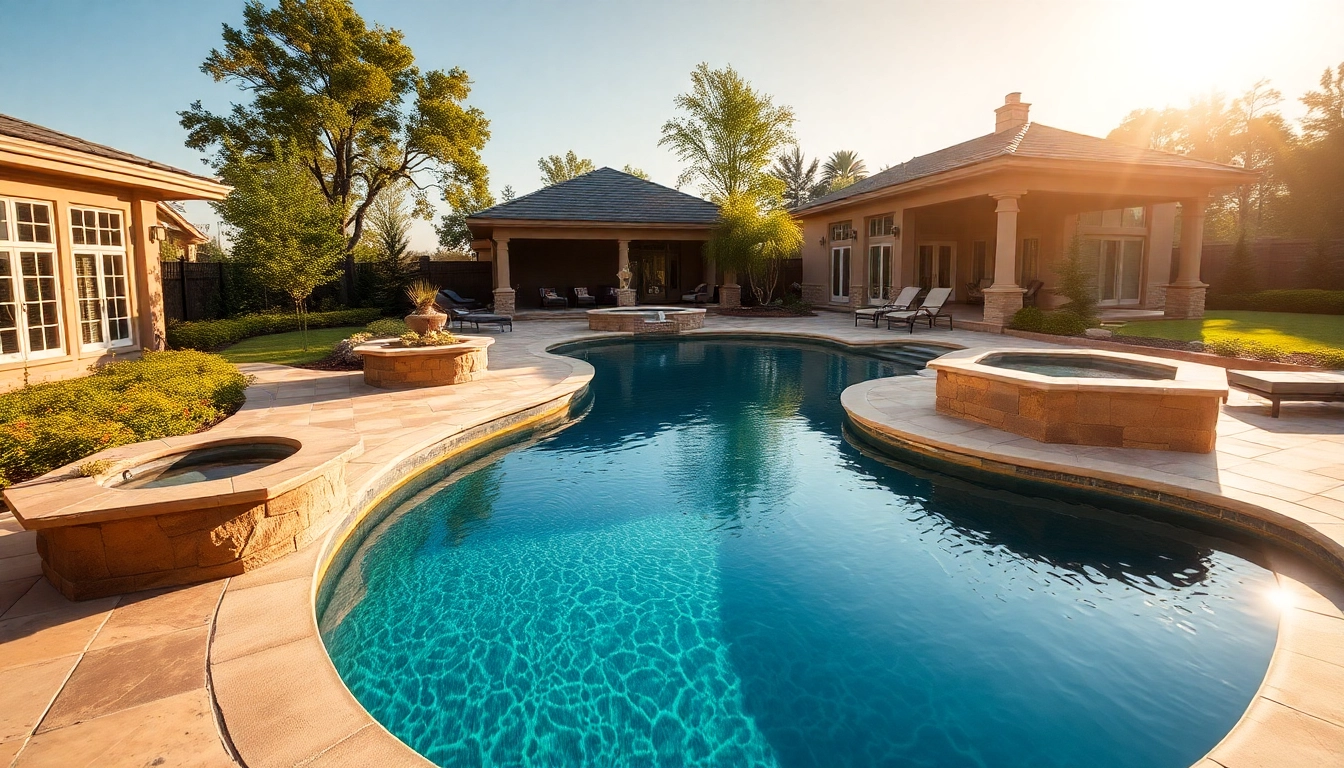Crafting Luxurious Hardscapes & Pools for Your Ultimate Backyard Retreat
The combination of hardscapes & pools creates a stunning outdoor environment that enhances the beauty and usability of your backyard. Understanding the fundamental concepts behind these elements is crucial to crafting an outdoor space that brings joy and functionality. From patios to pathways, hardscapes serve as the backbone of your landscape, integrating beautifully with pools to create a complete outdoor living experience. Hardscapes refer to the non-plant elements used in landscaping, including materials such as stone, concrete, bricks, wood, and metal. Unlike softscapes, which involve living elements like plants and flowers, hardscapes play a significant role in enhancing the structure and functionality of outdoor spaces. Elements like patios, walkways, retaining walls, and driveways form the hardscape foundation, contributing not just aesthetic appeal but also practical usability. Integrating pools into your hardscape design offers numerous benefits. First and foremost, it elevates the aesthetic appeal of your outdoor space. A pool surrounded by beautifully designed hardscapes can serve as a stunning focal point. Furthermore, well-planned hardscapes enhance the functionality of the pool area, providing safety features such as non-slip surfaces and strategic drainage solutions. This integration can also increase the value of your property as more buyers are drawn to homes with attractive outdoor spaces that include pools. To create a seamless integration of hardscapes and pools, certain key elements should be considered: When selecting materials for hardscapes surrounding your pool, both natural stones and pavers are popular options, each with distinct advantages and disadvantages: Your pool decking needs to balance aesthetics with safety and functionality. Here are some top materials to consider: Creating a beautiful hardscape doesn’t have to break the bank. Here are some budget-friendly ideas: Choosing the right layout for hardscapes around your pool can greatly enhance the functionality and aesthetic appeal of your outdoor area. Here are some popular layouts to consider: Enhancing your pool area with water features can significantly boost its appeal. Here are some ideas: Integrating a theme into your hardscape design can create a cohesive visual experience. Consider these themes: Proper drainage is key to maintaining your hardscapes and pools. Improper drainage can lead to erosion, flooding, and damage to surrounding structures. To address drainage issues: Routine maintenance is essential to keep your hardscapes and pools looking their best. Key maintenance actions include: Understanding common mistakes can save you time and money. Here are some pitfalls to avoid: Lighting plays an essential role in setting the ambiance around your pool and hardscapes. When selecting lighting, consider: Accessorizing your hardscape enhances usability and comfort. Consider these accessories: To create a harmonious space, blending hardscapes with softscaping elements is essential. Strategies include:Understanding Hardscapes & Pools: The Basics
What Are Hardscapes?
Benefits of Integrating Pools into Hardscape Design
Essential Elements of Hardscape Design
Choosing the Right Materials for Hardscapes & Pools
Natural Stones vs. Pavers: Pros and Cons
Natural Stones
Pavers
Recommended Materials for Pool Decking
Budget-Friendly Options for Hardscape Projects
Design Ideas for Hardscapes & Pools
Popular Hardscape Layouts Around Pools
Incorporating Water Features with Hardscapes
Themed Hardscape Designs for Pools
Common Challenges in Hardscapes & Pools Installation
Addressing Drainage Issues in Hardscape Designs
Maintaining Your Hardscapes & Pools
How to Avoid Common Installation Mistakes
Enhancing Your Space: Accessories and Lighting
Choosing the Right Lighting for Pools
Accessorizing Your Hardscape for Functionality
Combining Hardscapes with Landscaping Elements


0 Comment